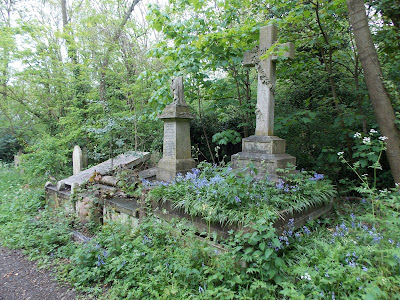The London Underground, also known as the Tube, is a metro system which carries more than one billion passengers a year, as many as the entire National Rail network. The network serves a large part of Greater London and parts of Buckinghamshire, Hertfordshire and Essex. The system serves 270 stations and has an impressive 402 kilometres of track, 45% of which are below ground.
The London Underground was the first underground railway in the world. Construction began in 1860 with the excavation of a trench beneath Euston Road. This was covered over. The first tunnels were built just below the surface and thousands of poor residents were displaced in the process.
Constructing the first section of London's Underground, 1860
Digging was disruptive as buildings and utilities were flattened
London's 1st Trial Underground Railway, 1862
The London Underground officially opened in January 1863 between Paddington and Farringdon using gas-lit wooden carriages hauled by steam locomotives. It was a great success!
The Barlow Shed construction at St Pancras Station, 1866
Metropolitan District Railway workers at Praed Street, 1867
Metropolitan District Railway locomotive at West Brompton, 1868
The first Tube railway, the City & South London opened in 1890 with electric locomotives hauling carriages. In 1898 the Waterloo & City Railway opened to the public using electric multiple units.
A Tube station platform in the early 1900s
Underground for Business or Pleasure by FE Witney, 1913
Push-pull train at Greenwich Park Station, 1913
Bo-Bo electric locomotive for the Metropolitan line, 1924
District Railway steam locomotive at Lille Bridge, 1928
London Underground Piccadilly line train, 1938
At the start of the German bombing raids over London, many Londoners decided to seek shelter underground. It was initially discouraged by the authorities, however, as the war continued platforms filled up. Conditions were unpleasant and unhygienic as space was limited and there were few ablution facilities. Civil disobedience was widespread as people fought over territories.
Underground protection during German bombing raids, 1941
London Underground Tube carriage, 1955
Since the early 1960s all passenger trains have been electrical multiple units with sliding doors.
A commercial postcard of Piccadilly Underground Station, 1960s
Punk girls travelling by Tube, 1970s
Awaiting departure for Epping, 1980
Heathrow Terminal 5 Station, 2008
Underground train at Watford Station, 2010
Travelling by Tube during Peak times can be quite scary for first-time visitors to London. Conditions underground can get uncomfortably cramped as hundreds of thousands of commuters make their journeys to and from work. If you can, it's best to avoid using the Tube during Peak travel times!
Overcrowding during Peak travel
The roundel was first used on the Underground in 1908 when the UERL placed a solid red circle behind station nameboards on platforms. The word "UNDERGROUND" was placed in a roundel on posters in 1912. Frank Pick thought the solid red disc cumbersome and took a version where the disc became a ring. The new symbol was registered as a trademark in 1917.
London Underground roundel
If you are interested in London's transport history, the London Transport Museum is a fascinating place to visit. The Museum has an incredible collection of vehicles, posters and photographs.
Some images were released into the Public Domain and are not subject to any copyright or patent restrictions. Other images have been licensed and used with permission.









old1.jpg)









































